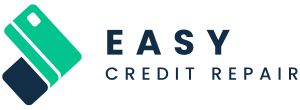Starting your credit journey can feel overwhelming, but you’re not alone. Whether you’re a new migrant whose overseas credit history doesn’t transfer, a young adult taking your first financial steps, or someone who has simply never needed credit before, building a solid credit foundation is achievable within 3-6 months.
Key Takeaways:
- Open an Australian bank account and get utility bills in your name as your foundation
- Start with a low-limit card ($500-$1,000) or a secured card if you’re new to the system
- Pay all bills on time
- Keep credit utilisation below 30% and pay off balances in full monthly
- Be patient – building good credit takes 3-12 months, but the benefits last a lifetime
Let’s walk through exactly how to build your credit score from zero to excellent.
Understanding Credit Scores
Your credit score in Australia ranges from 0 to 1,200, with anything above 622 considered “good”. The three main bureaus – Equifax, Experian, and illion – track your financial behaviour and create your report.
When you have no credit history, lenders can’t assess your reliability as a borrower. This creates a catch-22: you need credit to build credit, but you can’t get it without a history. The good news? Not having a score is better than having a poor one.
What Information Goes Into Your Credit File
Your report includes:
- Personal details (name, address, employment)
- Applications and enquiries
- Payment history on loans and credit cards
- Defaults, bankruptcies, and court judgments
- Credit accounts and their limits
Step 1: Build Your Financial Foundation
Open a Bank Account
This is your first step. Choose one of the big four banks (Commonwealth Bank, ANZ, NAB, or Westpac) or a reputable online bank. Having an Australian bank account shows lenders you’re established in the country.
What you’ll need:
- Valid identification (passport, driver’s license)
- Proof of address (utility bill, lease agreement)
- Initial deposit
Get Bills in Your Name
Utility accounts create a paper trail of responsible payment behaviour. Set up these accounts in your name:
- Electricity and gas
- Internet and phone services
- Water (if applicable)
Pay these bills on time, every time. While positive utility payments don’t boost your score directly, defaults and late payments will damage it.
Step 2: Choose Your First Credit Product
Low-Limit Credit Cards
Many Australian banks offer starter credit cards with limits as low as $500. These are perfect for building credit without the temptation to overspend.
Application requirements:
- Minimum age 18
- Australian residency or an eligible visa
- Minimum income (varies by bank)
- Valid identification and income proof
Secured Credit Cards
If traditional credit cards reject your application, secured cards are your backup plan. You provide a cash deposit (usually $200-$1,000) that becomes your limit. The bank holds this money as security while you build your credit history.
How secured cards work:
- Deposit $500 with the bank
- Receive a credit card with a $500 limit
- Use the card normally
- Make monthly payments
- After 12-18 months of good behaviour, upgrade to an unsecured card
- Get your deposit back
Step 3: Master Credit Card Usage
The 30% Rule
Keep your credit utilisation below 30% of your limit. If you have a $1,000 limit, never carry a balance above $300. This shows lenders you can manage credit responsibly without maxing out your cards.
Better yet: Pay off your full balance every month. This avoids interest charges and demonstrates strong financial discipline.
Payment Timing Matters
Pay your credit card bill before the due date, not after. Set up automatic payments for at least the minimum amount, but always aim to pay the full balance.
Step 4: Alternative Credit Building Methods
Buy Now, Pay Later Services
While BNPL services like Afterpay and Zip don’t directly build credit, using them responsibly shows financial discipline. Some lenders consider your BNPL history when assessing loan applications.
BNPL best practices:
- Only use for purchases you can afford
- Make all payments on time
- Don’t use multiple BNPL services simultaneously
Step 5: Monitor and Protect Your Progress
Check Your Credit Report Regularly
Get your free credit report from each bureau annually:
- Equifax
- Experian
- illion
Review these reports for errors or suspicious activity. Dispute any incorrect information immediately.
Track Your Score Improvements
Many banks and financial apps now provide free credit score monitoring. Watch your score improve over time as you build positive payment history.
Expected timeline:
- 3 months: First credit score appears
- 6 months: Score stabilises with consistent payments
- 12 months: Significant improvement with good habits
Common Mistakes to Avoid
Applying for Too Much Credit Too Fast
Each credit application creates a “hard enquiry” on your report. Multiple applications in a short period look desperate to lenders and can lower your score.
Missing Payments
Late payments stay on your credit report for five years. One missed payment can drop your score by 50-100 points.
Closing Your First Credit Card
Keep your first card open, even if you get better cards later. Credit history length helps your score, and closing accounts can hurt your credit utilisation ratio.
Using Credit for Cash Advances
Cash advances from cards carry high fees and interest rates. They also look risky to lenders and can negatively impact future applications.
Timeline Expectations
Building credit from scratch requires patience, but you’ll see progress quickly with good habits:
Months 1-3: Foundation building
- Open bank accounts
- Get utilities in your name
- Apply for your first credit card
Months 3-6: First results
- Credit score appears
- Payment history begins building
- Small limit increases are possible.
Month 6-12: Solid progress
- Score improvements become significant
- Qualify for better credit products
- Lower interest rates on loans
Year 2 and beyond: Excellent credit
- Access to premium cards
- Best loan rates
- Strong negotiating power with lenders
Special Considerations for Migrants
Your Overseas Credit History Won’t Transfer
Australian banks can’t access your credit history from other countries. You’re starting fresh, which means both challenges and opportunities.
Visa Requirements
Different visas have different credit access rules. Permanent residents generally have the same access as citizens, while temporary visa holders may face restrictions or higher income requirements.
Banking Relationships Matter
Building a relationship with one bank can help. If you have savings accounts, insurance, or other products with a bank, they may be more willing to approve your first credit card application.
When to Seek Professional Help
Sometimes building credit becomes complicated. Consider professional help if:
- Multiple applications get rejected
- You find errors on your credit report that won’t be corrected
- Your financial situation is complex (multiple income sources, irregular income)
- You need credit quickly for a major purchase
Professional credit repair services can navigate complex situations and advocate with bureaus and lenders on your behalf.
Conclusion
Building credit from scratch in Australia isn’t complicated, but it requires patience and discipline. Start with basic banking relationships, get your first credit card, and use it responsibly. Pay everything on time, keep balances low, and monitor your progress. Remember, a good score opens doors to better loan rates, rental approvals, and financial flexibility. The habits you build now will serve you for decades.
At Easy Credit Repair, we understand the challenges of building credit from zero. Our team has helped thousands of Australians create strong credit foundations and achieve their financial goals.
Ready to take control of your credit future? Check out our services or get a free quote today.
Frequently Asked Questions
How long does it take to see my first credit score in Australia?
Your first credit score typically appears after around 3 months of having an active credit account with a payment history. With consistent on-time payments, you’ll see meaningful improvements within 6–12 months.
Can I build credit in Australia without getting a credit card?
Yes, but it’s slower. While credit cards are the most effective starter tool, you can also build credit through personal loans or car loans. Credit cards are often safer for beginners because they offer lower limits and more flexibility.
What’s the difference between secured and unsecured credit cards?
Secured cards require a cash deposit (usually $200–$1,000) that acts as your limit, making them easier to get if you have no history or bad credit. Unsecured cards don’t need a deposit but have stricter approval criteria. Many people start with secured cards and later upgrade to unsecured once their history improves.
Which is better for building credit — a credit card or a personal loan?
Both help build credit, but credit cards give you more control. A small credit card limit lets you prove repayment habits month by month, while loans lock you into longer commitments. For beginners, credit cards are usually more practical.
Will applying for too many credit cards hurt my score?
Yes. Each application creates a “hard enquiry” on your report, and multiple enquiries in a short period can lower your score. Focus on one well-chosen card to start with.
I defaulted on a loan — can I still get a credit card?
It’s possible, but much harder. Defaults stay on your credit file for 5 years, and most banks will decline applications during that time. A secured credit card or credit repair service can help you get back on track faster.
Does credit repair really work, or is it a scam?
Legitimate credit repair works by identifying errors, negotiating with credit bureaus, and helping you demonstrate good financial behaviour. Be cautious of unrealistic promises — reputable services like Easy Credit Repair focus on practical steps that improve your approval chances over time.
I’m on a visa — am I even eligible for credit cards in Australia?
Yes, but eligibility depends on your visa type. Permanent residents usually have the same access as citizens, while temporary visa holders may need higher incomes or face stricter rules. It’s always worth checking with individual lenders.
What should I do if I accidentally miss a payment on my first credit card?
Contact your bank immediately, make the payment, and ask if they’ll waive the late fee as a first-time courtesy. One mistake won’t ruin your credit, but consistency from then on is crucial.
Disclaimer: All information provided in this article is based on research and our professional views only. Credit requirements and processes may vary between lenders and individual circumstances. If you have specific questions about your credit situation, please reach out to us for personalised guidance.




